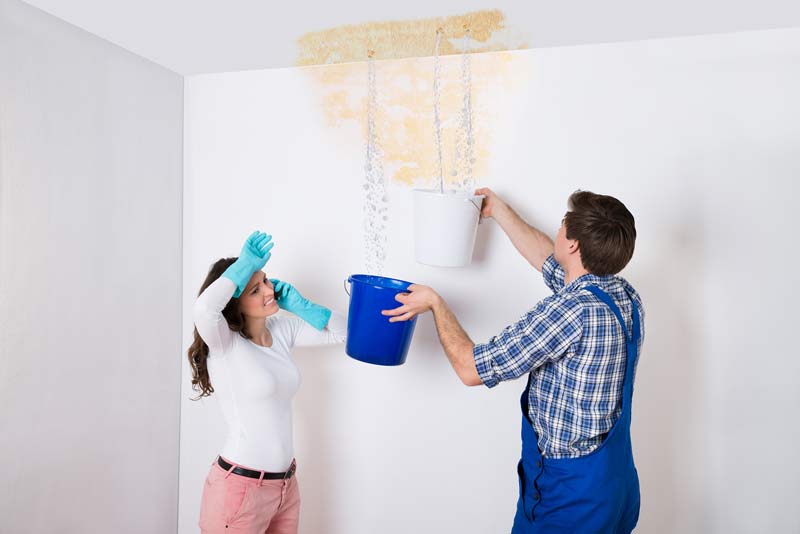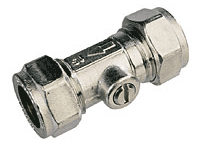
If not dealt with, an internal flood can cause real damage. But because of the number of pipes running through your home, it’s difficult to anticipate how, when or where a leak will occur.
However, by locating your home’s stopcock, if you experience a flood then you’ll be able to shut off your water supply and limit any further damage. This quick guide will help you understand more about what a stopcock does, where it can be found, and dealing with home emergencies.
What is a stopcock?
Your internal stopcock is a tap that controls the mains supply of water into your home. In the event of a leaking tap or a burst pipe, it’s this control which you’ll need to shut off in order to stop any more water escaping and damaging your home’s interior.
Many houses will also have an external stopcock, which manages the supply of water from your street and into your home. If an issue occurs between these two points, such as a rupture to the main pipe, then shutting off your external stopcock will prevent the ground around your home from becoming flooded.

What does a stopcock look like?
The stopcock in your home looks very much like a tap without a spout, and sits on top of an existing stretch of pipe. It manages the connection between two different pieces, and twisting it shuts off the flow of water. Most will have a typical tap handle which can be twisted by hand, but you may find that yours is more difficult and needs a set of grips or pliers to twist. Therefore, make sure you have the tools to hand if you know you’ll have trouble shutting it off.
Where is my stopcock?
Like many things in life, this is a question we only tend to ask ourselves when it’s a little too late. If you don’t know where your stopcock is, then make sure to locate it now to avoid any more significant stress in future – scouring the house for this inconspicuous piece of piping will be far less enjoyable if you’ve got gallons of water pouring through your ceiling. So although you may not be able to fix the problem yourself, shutting off the water will be vital in preventing further damage in your home while you’re waiting for emergency assistance from a plumber.
But where is my stopcock? Well, in houses that are old and have seen some deal of renovation, the internal stopcock could be found just about anywhere. This is because, while houses may change, stopcocks aren’t so often relocated, and are usually simply built around. Newer builds will of course have one in a far more reasonable and easy-to-reach spot, but if you’re having trouble, then here are some of the most common places you can find your internal stopcock:
- Underneath your kitchen sink
- In your main bathroom
- Under your stairs
- In your cellar
- In your utility-room
- Next to your gas or electricity meter
- In a corridor cupboard (most common in flats or shared accommodation, this can often be found low down)
Now, of course, we don’t all have cellars or utility rooms, but this list should give you a good idea of where your stopcock may be found. And if you live in terraced housing, or an estate where the homes seem to have been built at the same time, then it’s likely that the stopcocks will be located similarly in each home. Therefore, it’s worth giving your neighbours a knock and finding out where there’s is.
How do I shut off the water?
Your internal stopcock should be shaped very similarly to a tap, and so you should be able to shut it off by hand. However, if it hasn’t been used in a while then you may find it quite difficult to twist. Spray a little bit of WD40 around the connection, and use a pair of pliers or grips if necessary. You may also be able to remove the tap handle from the top of the stopcock, leaving a smaller shaft exposed which you can then grip and turn with a spanner.
Shutting off your stopcock is as simple as turning a normal tap – rotating clockwise will close it, and anticlockwise will open it back up again. Additionally, you may be able to hear the difference in flow of water, but keep a check on the source of your leak to make sure you’ve correctly closed it off.
How else can I stop a leak?
If the piping to your main fixtures using water – such as your taps, bath or toilet – is exposed, then you may find a shut-off valve for each. As the name suggests, these handy fittings shut off the water supply to the particular fixture they’re connecting to. These are really useful in dealing with certain leaks and floods in the home, as you’ll be able to isolate the source of the problem without shutting off the overall water supply to your home.
 These valves come in many shapes and sizes, and can be quite inconspicuous with no convenient tap handle on some. Instead, many shut-off valves have a button-like raised piece with a slot on top. When the valve is open, the slot will be in-line with the direction of water flow. To turn this valve, you’ll have to use a flat-head screwdriver or an equivalent piece of kit – the straight, blunt edge of a knife can be a good replacement if you’re in a hurry.
These valves come in many shapes and sizes, and can be quite inconspicuous with no convenient tap handle on some. Instead, many shut-off valves have a button-like raised piece with a slot on top. When the valve is open, the slot will be in-line with the direction of water flow. To turn this valve, you’ll have to use a flat-head screwdriver or an equivalent piece of kit – the straight, blunt edge of a knife can be a good replacement if you’re in a hurry.
Dealing with home emergencies
In the event of a home emergency caused by a leak, it’s vitally important to know where your stopcock is. Knowing its location and how to shut it off will ensure that you’re able to prevent any further damage to your home, but you’ll also need emergency assistance from a qualified plumber. That’s where Home Emergency Cover from Best Price FS can help – it’ll provide prompt assistance to deal with the issue, helping to protect your home and stop leaks from turning into floods. This insurance also covers you for many other emergencies, such as damage to your roof or breakdown of your boiler. At just £179 a year, and with no excess and unlimited claims, you’ll save money after just one home emergency.
Find out more at Home Emergency Cover. Visit Home Emergency Cover
Reference: https://www.thepattisallgroup.com/blog/top-5-real-estate-trends-watch-2018/.